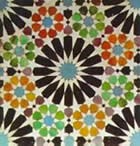Recently a friend of mine, the writer and mystic Lois Lang-Sims, who could be called the last of the Inklings, died in a nursing home on 11 March aged 97, surrounded by patients suffering from dementia. According to Grevel Lindop, the biographer of Charles Williams, asked about her health in those last months, she would exclaim "Oh, I’m crumbling away! But don’t worry, my dear, I’m looking forward to death. I really can’t wait!"
She was a friend and for a time the disciple of Williams, and the co-author of Letters to Lalage, in which she added her own commentary and reminiscences to Williams’s letters to her. For a time she was also a friend of Marco Pallis and helped to found the Tibet Society. She wrote her own mystical/ metaphysical books after breaking with Williams, including One Thing Only and The Christian Mystery, and a detailed study of Canterbury Cathedral, but many will agree that her most impressive writings were autobiographical -- including several volumes about her childhood.
 As a long-time friend, I corresponded with her for years right up to her death, as far as she was able. My memories of her correspond to what Grevel Lindop says. She was looking forward to death -- to her meeting with the Lord. Towards the end, through reading booklets from the Catholic Truth Society, including a biography of her beloved Pius XII, catechisms, and other books, and pastoral visits from the chaplain, she could be said to have reconverted to Catholicism. This was what she told me.
As a long-time friend, I corresponded with her for years right up to her death, as far as she was able. My memories of her correspond to what Grevel Lindop says. She was looking forward to death -- to her meeting with the Lord. Towards the end, through reading booklets from the Catholic Truth Society, including a biography of her beloved Pius XII, catechisms, and other books, and pastoral visits from the chaplain, she could be said to have reconverted to Catholicism. This was what she told me.
She had no interest in anything else, or in the republication of her books, although as Grevel writes Flower in a Teacup and A Time to be Born, "form one of the finest British autobiographies of the twentieth century and richly deserve to be reprinted", along with a third volume and other essays not yet published. She was sweet and intelligent to the end, and full of faith. The was no ego left. All who knew her will miss her.
She was a friend and for a time the disciple of Williams, and the co-author of Letters to Lalage, in which she added her own commentary and reminiscences to Williams’s letters to her. For a time she was also a friend of Marco Pallis and helped to found the Tibet Society. She wrote her own mystical/ metaphysical books after breaking with Williams, including One Thing Only and The Christian Mystery, and a detailed study of Canterbury Cathedral, but many will agree that her most impressive writings were autobiographical -- including several volumes about her childhood.
 As a long-time friend, I corresponded with her for years right up to her death, as far as she was able. My memories of her correspond to what Grevel Lindop says. She was looking forward to death -- to her meeting with the Lord. Towards the end, through reading booklets from the Catholic Truth Society, including a biography of her beloved Pius XII, catechisms, and other books, and pastoral visits from the chaplain, she could be said to have reconverted to Catholicism. This was what she told me.
As a long-time friend, I corresponded with her for years right up to her death, as far as she was able. My memories of her correspond to what Grevel Lindop says. She was looking forward to death -- to her meeting with the Lord. Towards the end, through reading booklets from the Catholic Truth Society, including a biography of her beloved Pius XII, catechisms, and other books, and pastoral visits from the chaplain, she could be said to have reconverted to Catholicism. This was what she told me.She had no interest in anything else, or in the republication of her books, although as Grevel writes Flower in a Teacup and A Time to be Born, "form one of the finest British autobiographies of the twentieth century and richly deserve to be reprinted", along with a third volume and other essays not yet published. She was sweet and intelligent to the end, and full of faith. The was no ego left. All who knew her will miss her.





